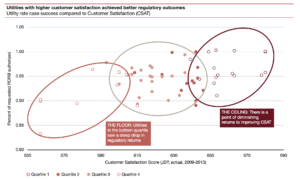From connecting with members to preventing customer defection, we’ve written and spoken plenty on the subject of member satisfaction, and with good reason. There is a rising tide of realization within the utility space that the transition from “ratepayer” to “member” can’t just be a labeling exercise, but an opportunity for meaningful engagement that will enhance member satisfaction and environmental, social, and corporate governance (ESG) ratings, while providing opportunities for everyone to save, members and your utility alike. As our cooperative partners already recognize, member engagement and satisfaction isn’t just part of the culture, but an opportunity to spur buy-in and participation in the demand response and distributed energy resource (DER) programs that can lead to great energy security, lower rates, and even happier members.
Why Member Engagement AND Satisfaction Matters
Utilities are considered natural monopolies, leaving members bereft of any retail choice to choose their electricity provider outside of relocating. So why spend the time, effort, and unrecoverable dollars to satisfy members who have no alternative? Fortunately, PwC has put out a great study that addresses exactly why member engagement matters in regulated monopolies. The punchline? Utilities with higher member satisfaction perform better during rate cases, giving them higher rates of regulatory return. The chart below tells it all:

- Source: PwC
Environmental, Social, & Corporate Governance Ratings
Beyond the direct potential for an increased regulatory return, electric providers with higher levels of member satisfaction have a clear path to enhancing their environmental, social, and corporate governance (ESG) ratings. Simply put, an ESG rating is an evaluation of a company’s impact on its employees, members, and communities. A higher ESG rating can prove extremely beneficial to credit ratings and supports the decarbonization efforts necessary to achieve net-zero carbon emissions. In some cases, higher ESG ratings are tied to corporate pay structures even.
The Times They Are a’Changing
Before we move on, it’s important to note that the electric vehicle, distributed energy resource (DER), and demand flexibility markets all indicate that consumers are literally buying into renewable energy. As the grid becomes increasingly complicated by technologies like EV charging, battery storage, and solar, utilities are currently facing resiliency issues which promise to both grow in magnitude and continue indefinitely and intermittently without preventative action. On top of that, increased extreme weather events and supply chain disruptions are further creating challenges to energy security and predicting the volatile, fluctuating costs of the energy market, both of which lead to dissatisfied members.
Using Your Challenges To Your Advantage
From climate change challenging the energy market and grid security to an increasingly sophisticated load curve, enterprising cooperatives can have their cake and eat it too, enhancing member satisfaction, lowering costs, increasing energy security, and meeting decarbonization needs by putting those same tools to work for your cooperative. With the right distributed energy resources management systems (DERMS), cooperatives can easily introduce conservation efforts like demand response or managed charging programs, which can lower the burden on the grid during peak periods of demand. Likewise, solar panel solutions like agrovoltaics as well as other renewable energy and battery storage technologies, offer cooperatives the chance to utilize community-generated energy to mitigate demand, in turn lowering costs and increasing security.
Prioritizing Member Engagement Conclusion
As electricity demand continues to evolve, member engagement has never been more important. Good member engagement is invaluable to utilities looking to enhance their demand response and distributed energy resource (DER) programs, as well as in building rapport with customers and local regulators alike. Your members want a greener tomorrow, and you can help them realize their wishes while generating fresh revenue. And don’t forget: research shows that increased member satisfaction leads to higher revenue. So what’s the wait?
Article originally published on August 21, 2018, with updates on January 10, 2023.





